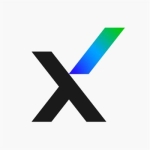What is our primary use case?
I use the solution in my company for securing incoming emails, specifically the ones with attachments. The tool scans the incoming documents for specific network traffic. We also use the tool to inspect and download files for malware or malicious content.
How has it helped my organization?
With the tool, malware does not get into our environment, and the user does not open emails with malware in them. We don't get any security breaches, which is the most important benefit of using the tool in our company.
What is most valuable?
The most valuable feature of the solution stems from the fact that since the tool is in front of the traffic, it catches a lot of stuff that some of our email cloud protection products don't see, as they are mostly antivirus-based. Check Point SandBlast Network is a behavioral-based tool.
What needs improvement?
The cost is a little bit high-end, and you need to get precise performance metrics in order to get the correct size. Improvements are required in both areas of the tool.
For how long have I used the solution?
I have been using Check Point SandBlast Network for four or five years. I work with Check Point R81.20.
What do I think about the stability of the solution?
What do I think about the scalability of the solution?
In terms of scalability, as we have an appliance in place, I would say that we can add additional appliances and use the load-balancing functionalities in the tool. If we are looking at things from just a single appliance perspective, we are stuck with it. You need to upgrade an appliance to another one if you need more performance. Check Point SandBlast Network is not optional as a virtual machine.
In our company, we use just one appliance.
All of our employee traffic goes through the tool. Around 300 people in our company use the tool.
How are customer service and support?
In our company, we haven't had so much need for support because the product is more or less a standard one. We had one issue a few years ago with false positives, but that was quickly resolved.
Which solution did I use previously and why did I switch?
I have not worked with any product similar to Check Point SandBlast Network.
How was the initial setup?
The setup was quite easy initially because you have many different options on how you want to set it up, like whether you want it to be able to monitor or intercept. Fine-tuning was needed because of the scaling needs. Sometimes, you get false positives, as with any product.
The solution was deployed by two people.
The solution can be deployed within a day.
Firstly, we had a PoC where the vendor supplied us with the device, which we plugged into a passive mode. We checked how it works, what it protects, and what our other solutions do. When we bought the tool, we implemented it as an email gateway, so all the traffic goes through it, and now it blocks everything that it finds bad.
What about the implementation team?
For the product's deployment phase, my company got help from Check Point and a third party.
What was our ROI?
Our company gained peace of mind from using the tool. With Check Point's firewall tools, it is quite hard to pinpoint the investment.
What's my experience with pricing, setup cost, and licensing?
The product's cost is high.
Which other solutions did I evaluate?
I think we tried Check Point SandBlast Network as the first tool in our company, and we stuck with it because it made sense because it was quite well integrated into the other Check Point products, and we didn't want to try to integrate it with other tools.
What other advice do I have?
Though I think it could become a complex task, the feature set is there in the tool to meet the needs of its users.
When it comes to the maintenance part, one needs to understand that when it comes to Check Point, the releases are the same, and it is almost the same as the gateway.
I recommend the tool to others. Other people need to test the tool before purchasing it. There is also a cloud version, so one should test whether that is a better option. Yeah. Actually, it is quite a valuable product.
I rate the tool an eight out of ten.
Disclosure: I am a real user, and this review is based on my own experience and opinions.












Check Point does have an on prem Sandblast appliance. Check out the TE-2000-XN or TE250-XN.